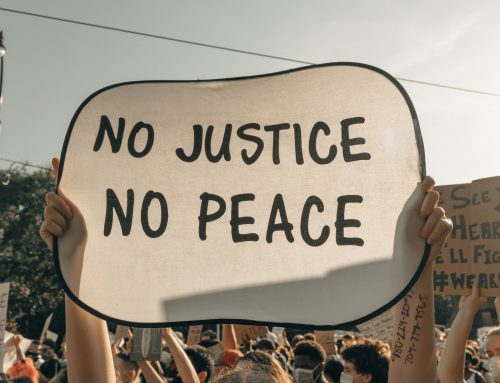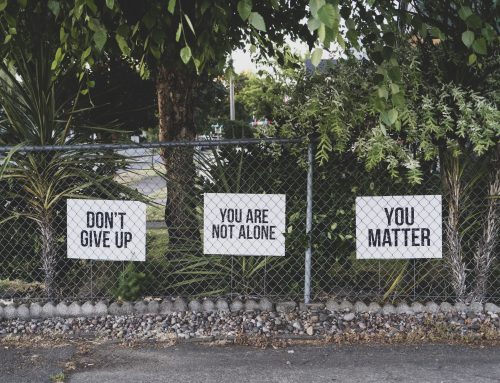When I was young, about seven or eight, I had “blackouts.”
That was my word for them. Not because I lost consciousness or had holes in my memory. They were “blackouts” because it felt like I was blacking out from reality like the world was suddenly a bit more tenuous. Everything around me seemed to lose its depth as if I was no longer directly observing reality but rather just an image of it, flat and lifeless. And as I felt my connection to reality wane, it seemed that I, too, might wane with it, that my very essence might evaporate into nothingness, or perhaps that nothingness was all I had ever really been in the first place. It was horrifying.
Of course, it was horrifying. It was a panic attack.
That sense of reality slipping away, and of me slipping away with it, was the derealization and depersonalization that are common with a panic disorder. As I would soon come to discover, I was not alone. When I described my experiences to my mother, she confided in me that she had dealt with anxiety her entire adult life and had been seeing a psychiatrist for years. She got me in with a psychotherapist who worked with children. His name was Jim Consoli, and he was a wonderful man. He taught me coping techniques, breathing and meditative self-soothing that would help me get through a panic attack, and he helped me understand them. Unlike anxiety attacks, panic attacks typically have no external trigger. They come without warning, and they fade away on their own. Jim taught me the very Zen strategy of embracing the transience of a panic attack, focusing on the passage of time from one moment to the next, until one of those moments eventually carried me out the other side of the attack. I remain indebted to Jim Consoli, and my mother, to this day.
Later, when I was older, we augmented my coping strategies with medication. First imipramine, because it was the antidepressant my mother had found success with, then desipramine, and finally, when it became apparent that tricyclics were not the answer, fluoxetine. It did the trick. Let this be a lesson to anyone who will listen: just because a medication does not work for you does not mean medication, in general, cannot help. Neurology is a complicated business, as unique as fingerprints. Finding the right medication is a process, but it’s a process worth seeing through.
A funny thing about SSRIs: the people who have success with them frequently don’t have to stay on them permanently. As I completed college and entered the whirlwind of “real life,” I found I had left my panic attacks somewhere by the wayside. I had not had one in years. With my doctor’s blessing, I discontinued the fluoxetine. The panic attacks never returned. I considered myself “cured.”
Life happened. Marriage. Kids. A dog. A second dog. Then, sadly, back to one dog. A few jobs. Eventually, a career. A second career. (Writing, my passion.) I won’t belabor the details. Like Jimmy Buffett says in He Went to Paris, twenty more years (or thereabout) slipped away.
My mid-thirties were, by any objective standard, good: two bright and inquisitive children, a marriage with more anniversaries than could be counted on two hands, a comfortable standard of living that allowed me to pursue my writing without depending on it for my livelihood. And while I felt some modicum of what might be called “success,” what I did not feel was contentment. An irascibility began to swell within me. My relationships were strained. My marriage had become more work than a partnership, and eventually more of a shared living space in which two cohabitants kept their distance.
My wife and I entered couples therapy in an effort to improve our marriage. I was not optimistic, but this woman had given me a dozen years of her life, two wonderful children, and a host of happy memories. I owed her the effort. We began counseling, and for the first time in years, through the help of an intermediary, we began to talk about our problems rather than scream about them. Again, I’ll spare you the details of our counseling, both for the sake of brevity and because they are simply too personal to commit to the page. But I will share the revelation our counseling brought me to: I was not unfulfilled, I was depressed.
I had failed to appreciate that panic attacks and depression are often two heads of the same hydra. My panic attacks had been random, tied to nothing in my real life, and that had flavored my impression of my own mental health. There were concrete experiences I could point to that were leaving me irritable and unfulfilled. I could articulate my desires, list in great detail the things I thought I needed to be happy, and in the absence of those things, I felt validated in my pervasive negativity. I had accepted misery because I could provide an accounting of it.
I made an appointment with my doctor. I restarted fluoxetine.
About five days later, I was reading an article, something lighthearted. In the middle of reading it, I realized I was smiling. More specifically, I realized I was smiling again, that I had probably smiled more over the course of the last couple of days than I had over the last couple of months. I felt free to smile. I felt allowed to participate in the joy of the moment again. And it was a wonderful feeling.
I won’t leave you with a picture of my life that is all sunshine and roses. I feel happy most of the time, but sometimes I’m sad. And there’s nothing wrong with being sad. Sadness is an emotion, and sometimes it’s appropriate. Depression isn’t the sadness you’re drowning in, it’s the chains that hold you beneath the surface. And I finally realized, none of us have to bear those chains willingly.
 By day, Shannon Matthew McNally works in the transportation industry. By night, he works in a world of sword and sorcery that exists only in his head, and, if you are a reader, hopefully in yours, too. He is the author of the Kalatheptoris Cycle and other random musings. He was educated at Virginia Tech and currently lives in Illinois with his wife, his kids, his dog, and his overactive imagination.
By day, Shannon Matthew McNally works in the transportation industry. By night, he works in a world of sword and sorcery that exists only in his head, and, if you are a reader, hopefully in yours, too. He is the author of the Kalatheptoris Cycle and other random musings. He was educated at Virginia Tech and currently lives in Illinois with his wife, his kids, his dog, and his overactive imagination.
S. Matthew McNally can be found on Twitter.








Leave A Comment